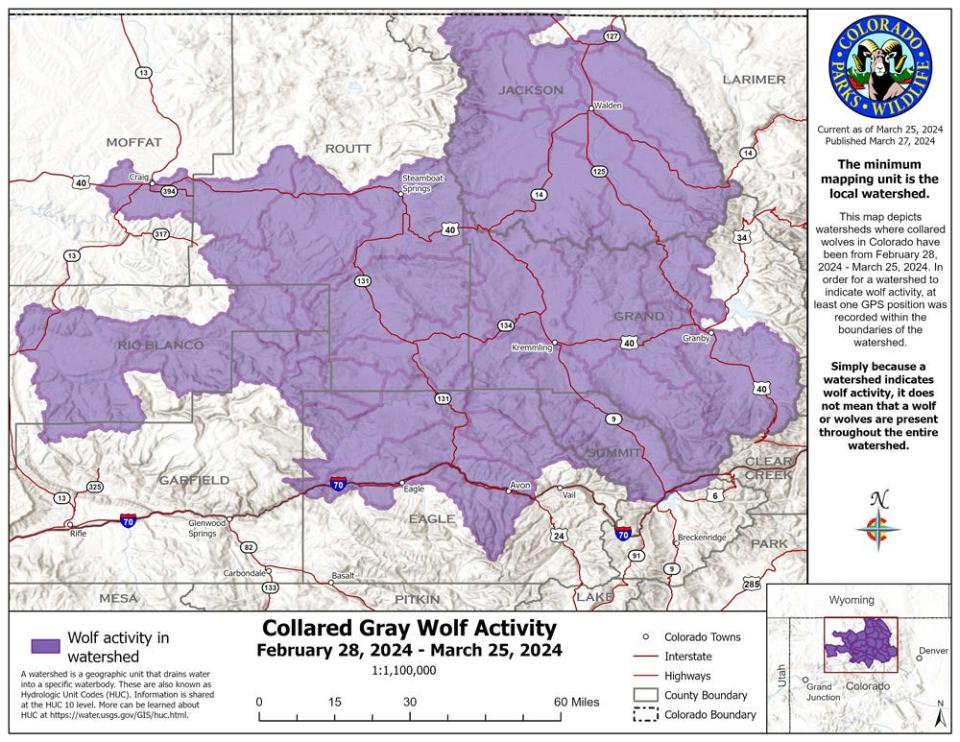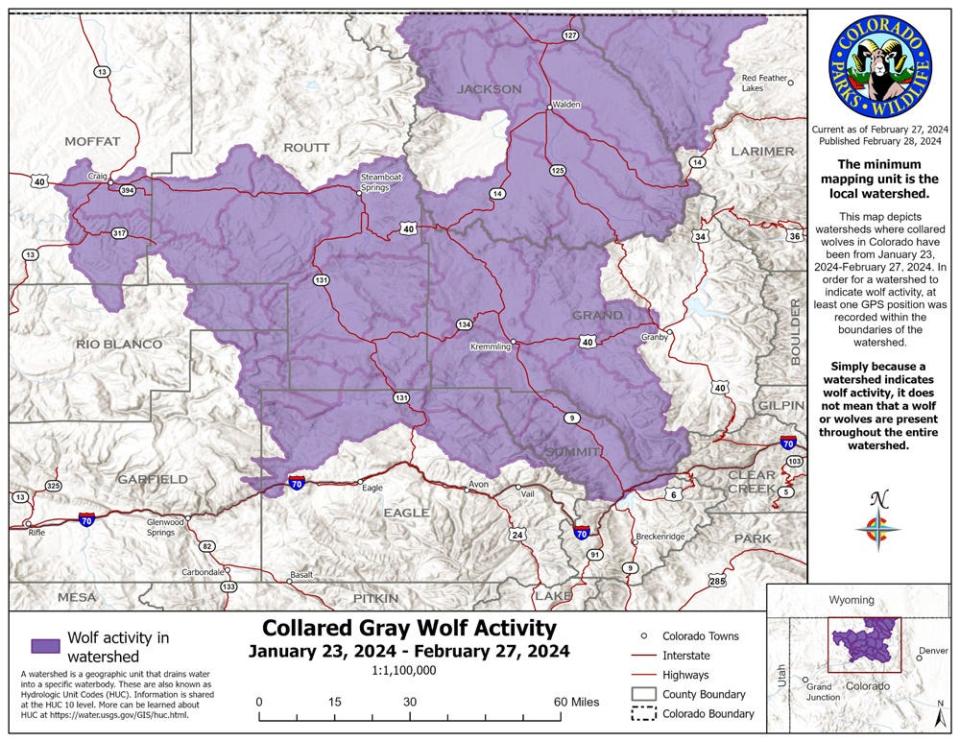Colorado, we have a problem: Collar on released wolf not functioning, another soon to fail
Three months into Colorado's wolf reintroduction of 10 wolves, one GPS collar is no longer working and another is only partially functioning and expected to fail soon.
Colorado Parks and Wildlife announced the collar issues in a news release Wednesday that included the release of its latest wolf activity map, which tracked the animals Feb. 28 to March 25.
The agency told the Coloradoan it would not attempt to recollar the wolf because wolves are in the breeding season and any recollaring could pose an unnecessary risk to potential reproduction.
This isn't the first time Colorado wildlife officials have had wolf collar issues, including failures and a wolf slipping its collar.
Here's what to know about the collars and the wolves' movement in Colorado:
This story has been updated from the original version with more information regarding the collars from Colorado Parks and Wildlife.
Here's what Colorado Parks and Wildlife released regarding the collars
The map released Wednesday was created using GPS data from all functioning collars in Colorado.
One of the collars placed on a wolf translocated from Oregon is no longer providing signals to biologists. The animal with the failed collar is traveling with another animal with a functional collar, which currently allows the agency to monitor that animal.
The agency has confirmed that the animal with the malfunctioning collar is still alive based on visual confirmation from an airplane.
A collar on another wolf has been identified as partially functional and may not be fully functional in the near future.
There have been no wolf mortalities in Colorado and no reported livestock depredation in the last 30 days.
Here's what Colorado Parks and Wildlife said the collars cost and why they might be failing
Here are answers the agency provided to questions from the Coloradoan regarding the collars:
The collar that is no longer working has not been working for less than two weeks.
The base cost of each collar is $1,575.
The collars are expected to last up to three years.
Collars can fail for various reasons, and it is a common occurrence with all animals the agency collars.
The agency said wolves are rough on GPS collars. If a wolf chews on a collar, that can make it stop working correctly. Other causes of failure can be battery issues, loose circuitry or a lack of connectivity. "We do not know the exact reason for this failure," the agency said.
Here is how the GPS collars are supposed to work
The collars are programmed to record a position every four hours.
Once four locations are recorded, the four locations are transmitted via satellite to Colorado biologists.
Some factors, such as dense cloud cover and closed terrain, can delay the frequency of position recording and data transmission.
The data allows biologists to learn where wolves have been but does not tell them where wolves are at a current point in time, nor can they predict where the wolves will go.
To protect the wolves, specific GPS data will not be shared.
What Colorado's monthly wolf activity map shows
The latest map shows an enlarging area where the wolves have been in the last month compared to the previous map for Jan. 23 through Feb. 27.


Most notable are wolves being detected in watersheds that extend south of Interstate 70, east of U.S. Highway 40 southeast of Granby and deeper into Rio Blanco County.
After the February map was released, some media outlets and social media sites indicated a released wolf or wolves had wandered north into the watershed in Larimer County.
Colorado Parks and Wildlife staff discounted that at the March 13 commission meeting and indicated those wolves showing in Larimer County watersheds are the collared wolf or wolves from the North Park pack.
The agency said simply because a watershed indicates wolf activity, it does not mean that a wolf or wolves are present throughout the entire watershed, nor that they are currently in the watershed, as wolves tend to wander widely, according to the agency.
The map is broken down into watersheds where the 12 collared wolves in Colorado have been for the last month. Ten of those collars were placed on wolves captured and released from Oregon and the other two are from the only known members of the North Park pack to be in the state.
Watersheds were used for mapping because wolves are far more likely to use geographic features to affect their movement than political boundaries.
The watershed maps provide detailed information that can help agricultural producers be informed of the general areas where wolf activity is known to exist without being too general while also not being specific enough to risk the protection of individual wolves.
In order for a watershed to indicate wolf activity, at least one GPS point from a wolf's collar was recorded within the boundaries of the watershed.
Ways to learn more about Colorado's wolves
Colorado Parks and Wildlife: Wolves in Colorado website
Colorado Outdoors podcast: "The Colorado Gray Wolf Reintroduction''
This article originally appeared on Fort Collins Coloradoan: Collar on Colorado released wolf fails, another expected to fail soon

